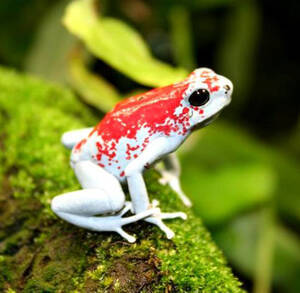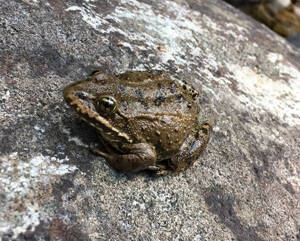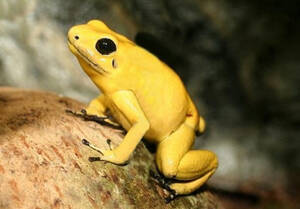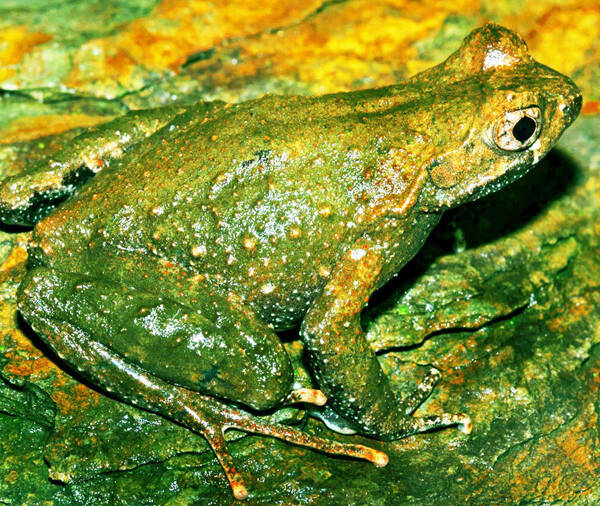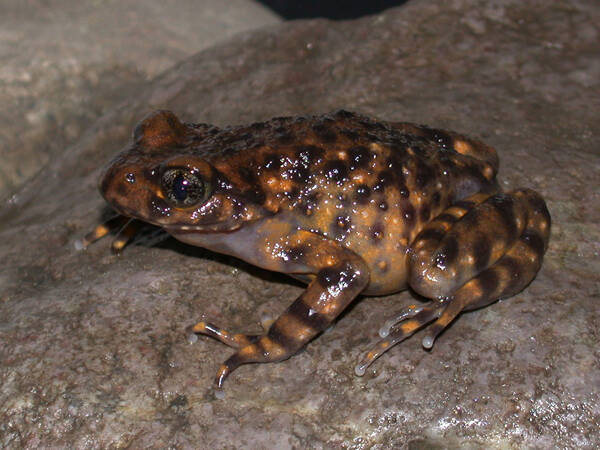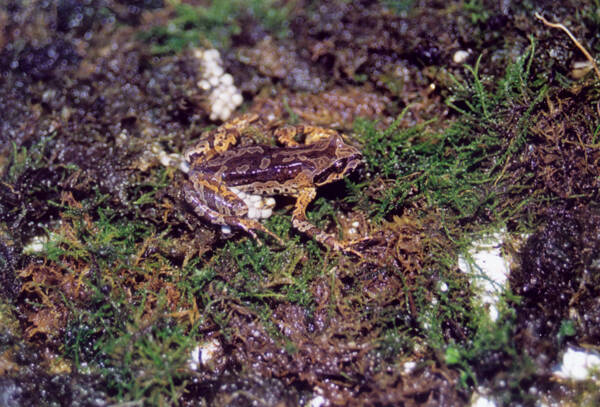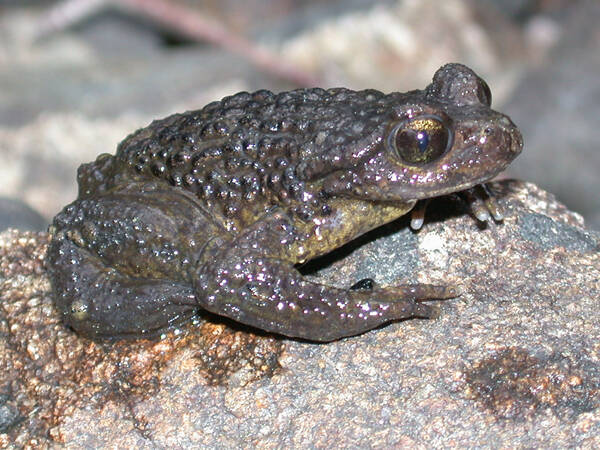poisondartfrog
IUCN
LCBasic Information
Scientific classification
- name:poisondartfrog
- Scientific Name:poisondartfrog,poison dart frog, poison dart frog, poison javelin frog
- Outline:Anura
- Family:P.d.f.family
Vital signs
- length:1.5-6cm
- Weight:1-6g
- lifetime:About 8 years
Feature
It is the most beautiful frog in the world, but also one of the most poisonous species.
Distribution and Habitat
Poison dart frogs are mainly distributed in tropical rainforests such as Brazil, Guyana, and Chile.
Appearance
Poison dart frogs are small, usually only 1 to 5 centimeters (0.5 to 2 inches) long, but they are very conspicuous, with a combination of black and bright red, yellow, orange, pink, green and blue colors, and scales on their limbs. The lemon yellow color is the most dazzling and prominent. They live on or near the ground. All belong to the family Dendrobatidae, but not all 170 species are poisonous. Poison dart frogs have some of the most powerful toxins. The poison glands scattered throughout the body of this amphibian produce alkaloids that affect the nervous system.
Details
The scientific name of the poison dart frog is poisondartfrog. It is the most beautiful frog in the world and also one of the most poisonous species.
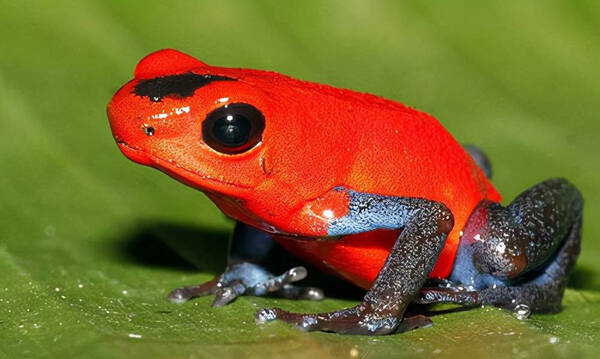
Generally speaking, poison dart frogs feed on insects such as fruit flies, crickets, ants, and spiders.
Poison dart frogs have special parenting behaviors. Mating between males and females often occurs near bromeliads that live on fallen trees. This is not because poison dart frogs appreciate the beauty of flowers, but because the whorled leaves of these plants form a small "pond" that provides a place for frog eggs to develop. After mating, the female frog lays eggs in the water. Once the eggs develop into tadpoles, the male frog carries the tadpoles from the ground to different "ponds" of bromeliads with appropriate amount of water on the tree (because tadpoles are carnivorous, two tadpoles will kill each other together) and eats the unfertilized eggs as food.
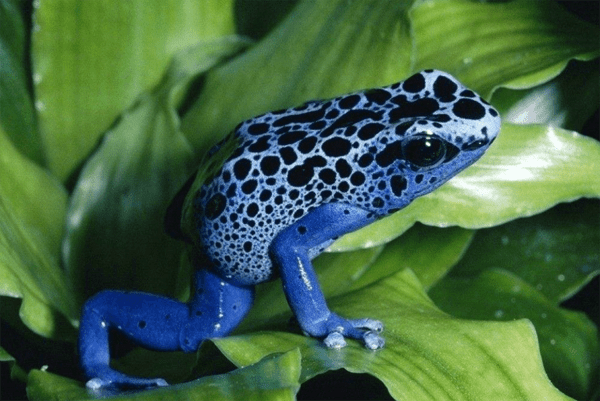
Wild poison dart frogs are more or less toxic, and the degree of toxicity varies from population to population. Many poison dart frogs are on the verge of extinction. Because Native American Indians smeared the poisonous secretions of poison dart frogs on blow darts to make poison darts, this frog is usually called a "dart frog". This frog is not big, but has beautiful colors. But don't be fooled by its beautiful appearance, let alone "close contact" with it. The poison dart frog can secrete a highly toxic neurotoxin on its back, which can prevent muscle movement, cause muscle and respiratory paralysis, and eventually lead to death. A small poison dart frog can secrete enough venom to kill 10 people, and only 136 micrograms can kill a person weighing 68 kilograms.
At present, there are more than 170 species of poison dart frogs discovered by humans, and 55 of them are highly toxic. After a series of complex studies, people found that this frog poison substance is a steroid toxin that can destroy the normal activities of the nervous system. Its main form of action is: when the poison is used inside or outside the axon, it can cause irreversible depolarization of the axon, reduce the amplitude of the potential action, hinder ion exchange in the animal body, and make the nerve cell membrane a poor conductor of nerve impulses. In this way, the instructions issued by the nerve center cannot reach the tissues and organs normally, and eventually cause the heart to stop beating, and there are no effective emergency measures. However, the poison of poison dart frogs can only work through human blood. If you don't cut your fingers, the poison can only cause a rash on your fingers at most, but it won't kill you. The smart Indians understand this. When they catch poison dart frogs, they always wrap their hands with leaves to avoid being poisoned.
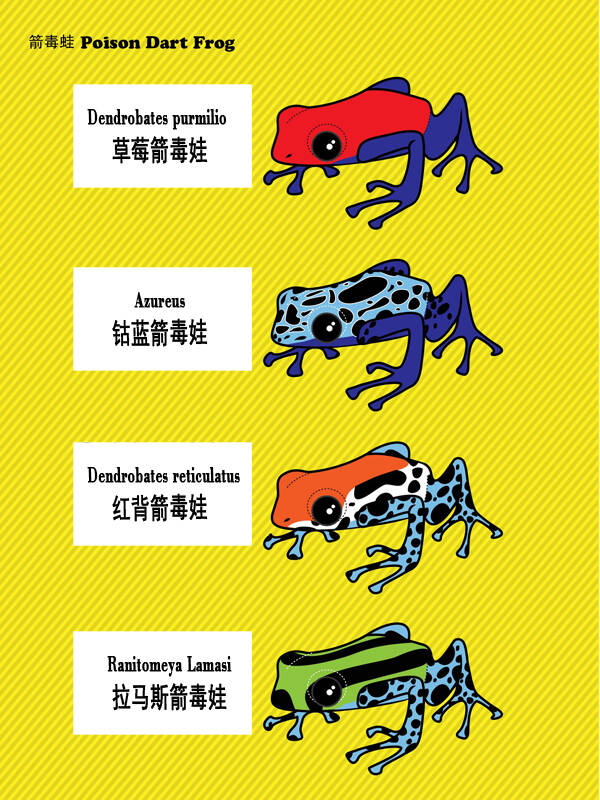
Already 1 of the 5,743 known amphibian species, including the flower poison dart frog, are on the World Conservation Union's Red List of Endangered Species. Populations of amphibians such as frogs, toads and salamanders are declining rapidly due to human destruction, fungal diseases, climate change, habitat loss and pollution. As of 2013, the World Conservation Union is planning to form an amphibian conservation alliance, according to Science. The group will organize the global amphibian population decline crisis through international research, conservation and legislation.
Listed in Appendix I, II and III of the Convention on International Trade in Endangered Species of Wild Fauna and Flora (CITES) in Appendix II of the 2019 edition.
In 2013, it was listed as a species of least concern in the IUCN Red List of Threatened Species.
Protect wildlife and eliminate bushmeat.
Maintaining ecological balance is everyone's responsibility!


